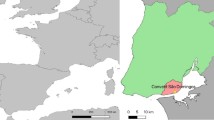Abstract
The relative contents (RCs) of elements in the femoral arteries as well as the thoracic aorta, coronary, basilar, and radial arteries from 26 subjects within the age range between 55 and 92 yr old, were analyzed by inductively coupled plasma atomic emission spectrometry.
The RCs of calcium and phosphorus in the femoral arteries started to increase before the age of 60 yr. The RCs of magnesium increased after the age of 70 yr. However, the RCs of sulfur did not change significantly within the age range between 55 and 92 yr.
With regard to localization of the mineral accumulations in the femoral arterial wall, it was found that the accumulations of calcium and phosphorus occurred only in the tunica media, only in the tunica intima, or in both the tunica media and the tunica intima. The manner of accumulation of calcium and phosphorus in the femoral arterial wall was different from that in the aortic wall.
The average RCs of calcium in the 26 specimens were the highest in the femoral artery, followed in descending order by the thoracic aorta, coronary, basilar, and radial arteries. The average RCs of phosphorus were highest in the thoracic aorta, followed by the coronary, femoral, basilar, and radial arteries. It is noted that the accumulation of mineral elements never occurred uniformly in all the arteries.
Similar content being viewed by others
References
S. Y. Yu and H. T. Blumenthal,J. Gerontol. 18, 119 (1963).
R. J. Elliott and L. T. McGrath,Calcif. Tissue Int. 54, 268 (1994).
E. L. Kanabrocki, G. Fels, and E. Kaplan,J. Gerontol. 15, 383 (1960).
Y. Tohno, S. Tohno, T. Minami, M. Ichii, Y. Okazaki, M. Utsumi, F. Nishiwaki, Y. Moriwake, M.-o. Yamada, and T. Araki,Biol. Trace Element Res., in press.
Y. Tohno, S. Tohno, H. Matsumoto, and K. Naito,J. Nara Med. Assoc. 36, 365 (1985).
S. Tohno, Y. Tohno, T. Minami, M. Ichii, Y. Okazaki, M. Utsumi, F. Nishiwaki, and M.-o. Yamada,Biol. Trace Element Res. (in press).
H. Nemetschek-Gansler, H. Weiss, H. J. C. Wenisch, B. Noetzel, and U. Pretzsch,Atherosclerosis 34, 167 (1979).
T. Kawasaki, S. Sasayama, S. Yagi, T. Asakawa, and T. Hirai,Cardiovasc. Res. 21, 678 (1987).
A. B. Baker, G. C. Flora, J. A. Resch, and R. Loewenson,J. Chron. Dis. 20, 685 (1967).
P. McGarry, L. A. Solberg, M. A. Guzman, and J. P. Strong,Lab. Invest. 52, 533 (1985).
Author information
Authors and Affiliations
Rights and permissions
About this article
Cite this article
Tohno, S., Tohno, Y., Minami, T. et al. High accumulation of elements in the human femoral artery. Biol Trace Elem Res 57, 27–37 (1997). https://doi.org/10.1007/BF02803867
Received:
Accepted:
Issue Date:
DOI: https://doi.org/10.1007/BF02803867




